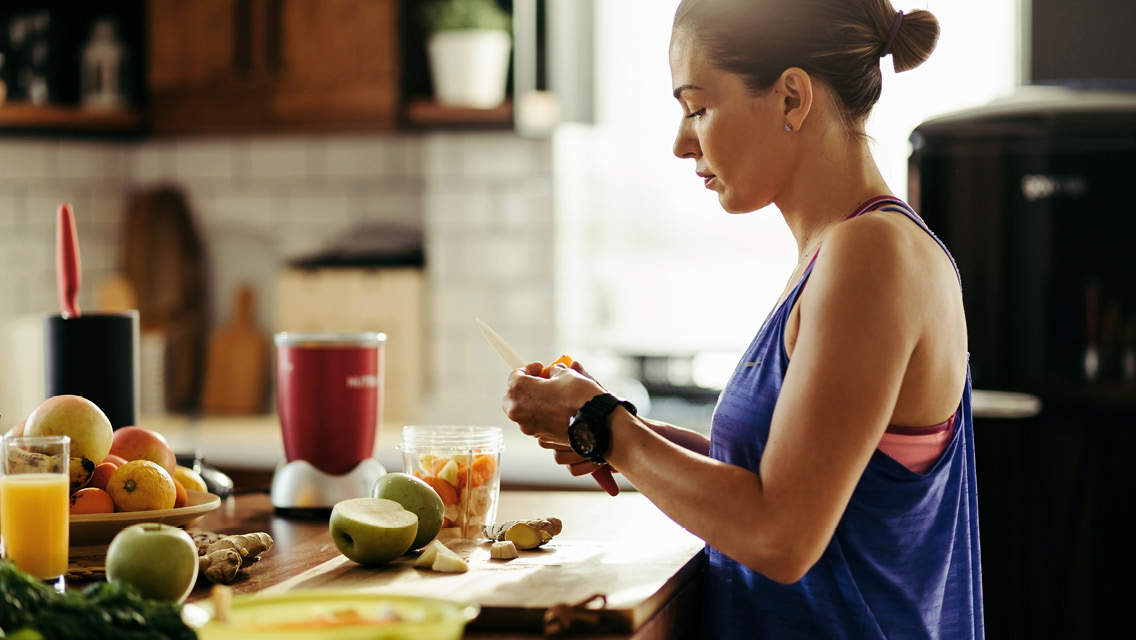Zoe loves ice cream, but recently she’s started to suspect that her favorite treat is the culprit behind her regular stomachaches. She’s thinking of kicking dairy to the curb, but she just loves it so much.
Tomás feels wired all day, and he thinks the problem could be his two cups of java in the morning. He’s curious to see if cutting back would help his anxiety, but he can’t imagine his day without coffee.
Samira just got the results of her physical, and her blood sugar is high. Her doctor even used the word prediabetic. She’s determined to quit the sweet stuff, but as she starts to read labels, she realizes that sugar is in everything — not to mention the fact that it’s totally delicious.
These scenarios aren’t limited to dairy, caffeine, and sugar. Maybe you suspect that gluten makes you achy, or soy is behind your digestive problems, or nuts are causing your brain fog.
Whatever the case, it can definitely be challenging to ditch a favorite food: You might be psychologically or physically dependent on it. And if one of your dietary staples suddenly disappears from your plate, how will you keep from starving?
We called in two trusted nutritionists to give you their top tips for successfully quitting those foods you love (that don’t love you back).
1. Become aware. The first step is to figure out where off-limit foods are hiding out, says certified nutrition specialist Deanna Minich, PhD.
It’s widely known that wheat contains gluten, for example, but don’t forget that barley, rye, and spelt do, too. Oats are naturally gluten-free, but unless the package says otherwise, they were probably produced in a plant with gluten-containing grains, meaning the odds of cross-contamination are high. Minich offers the acronym BROWS (barley, rye, oats, wheat, and spelt) to remember what to avoid. Many restaurants and food manufacturers make it easy by putting “gluten-free” on their menus and labels.
It takes slightly more detective work to sleuth out other common trigger foods. Dairy hides out in everything from granola bars to frozen pizza crusts. And practically every packaged food contains sugar — even those you wouldn’t suspect, like all-natural nut butters and “healthy” salad dressings. So read labels closely, and get familiar with all the different sugar pseudonyms. (For a complete list, see 61 Names for Sugar.)
The secret that makes every grocery trip faster, simpler, and exponentially healthier? Buy most of your items in the fresh produce section. Carrots, Brussels sprouts, and bok choy never contain gluten, dairy, refined sugar, or caffeine.
Closely reading every label or keeping a list of foods to avoid can feel like a slog at first, but fear not: After a few weeks you’ll learn which foods are safe (and which aren’t), and you’ll zip through the grocery store with ease and confidence. Besides, your body will thank you.
2. Substitute. Finding a satisfying substitute is absolutely essential for giving up a familiar food, says functional-medicine nutritionist Dee Harris, RD, LDN. And it’s OK to take baby steps toward the healthiest option. If you’ve eaten English muffins every morning for the past eight years, try switching to a gluten-free English muffin or multigrain gluten-free toast — even if your ultimate goal is to ditch grains at breakfast altogether. You can take additional steps further down the line.
The key to finding a sustainable substitute is to identify what it is you love about the food you’re giving up, and then find the same quality in a replacement. If dairy’s creamy texture has you hooked, try alternatives with the same consistency: cashew butter, tahini, full-fat coconut cream, or avocado-based puddings.
If you’re ditching caffeine, start with a decaf version of your particular brew. Or you may grow to love caffeine-free herbal tea if it’s simply the warmth of the cup that you crave.
Sugar is more challenging to give up, notes Harris, but not impossible. Her best advice is to go cold turkey. The first week can be challenging — and it’s important to keep track of your symptoms as you detox — but after that, sugar cravings decrease dramatically.
You’ll still want a replacement at the ready, however. One successful strategy is to seek out foods and beverages with really intricate flavors, like complex curries and spicy chai teas. An elaborate mix of seasonings can satisfy the palate in a new way, making sugar an afterthought. Increasing intake of healthy fats — like those found in avocados, olive oil, coconut oil, and small oily fish — can also curb sugar cravings.
If you’re still jonesing for the sweet stuff, try eating low-glycemic fruits like berries, which offer a similarly satisfying flavor without the blood-sugar spike. A small amount of dark chocolate (with a cacao content of more than 70 percent) is another good choice.
3. Stay positive. The process of cutting out a food is far more successful if you forget what you can’t eat and focus more on what you can. “From a psychological perspective, the process needs to feel additive,” says Minich. “Focus on what you put back in.” Think of it as crowding out the bad with a whole bunch of good stuff, leaving no room left on your plate for the food you’re kicking to the curb.
4. Don’t tell yourself you’ll be off a food forever . . . even if you might be, says Harris. Psychologically, thinking of things in an all-or-nothing way can cause us to rebel — so believing you’ll never eat ice cream again could make it harder to resist. Besides, today is not forever. The only meal you have to get through without a certain food is the next one. So for now, focus on the moment — and the meal — in front of you. Before you know it, your new habits will become second nature.
This appeared in the May 2020 issue of Experience Life magazine as “So Long, Pizza?”.




This Post Has One Comment
Very good advice. I have been following this advice for years and at 73 my numbers are all within the normal range. I started eating one meal a day healthy. Now I have 1/3 of my diet under control. As I ate up the bad food I replaced it with the healthy food and now I am able easily transition into a healthy eating habit. Keep up the good advice.